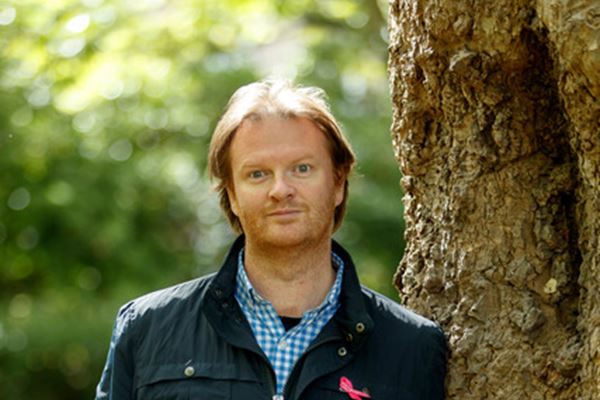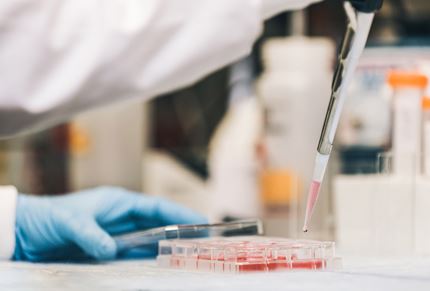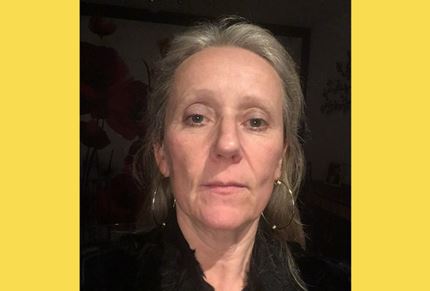Oestrogen is a hormone produced in the ovaries. It helps control how cells grow and what they do in the body. Some cells in the breast carry receptors for oestrogen and are more dependent on the hormone to know when to grow. If breast cancer starts as one of these cells with oestrogen receptors (ER), it is classified as ER-positive (ER+), otherwise they are ER-negative. ER-positive breast cancers make up around 70% of all breast cancers.
What do we still not know about breast cancer?
What is breast cancer and why haven't we cured it yet?
Breast cancer is the second most common cancer in the world. We all have breast tissue, so it can affect anybody, but it is most common in women. Thanks to research, there have been huge improvements in both diagnosis and treatment of breast cancer over the last few decades - more people are surviving the disease than ever before.
But it is still the leading cause of cancer death in under 50s - because unfortunately, some breast cancers remain harder to treat than others. Our researchers are working hard to answer some of the most challenging questions that still remain so that we can start new cures for breast cancer and save more lives.
1. How can we better prevent and treat metastatic breast cancer?
The primary cause of breast cancer death is metastasis – when a cancer that starts in one place spreads to other parts of the body. Breast cancer often spreads to nearby lymph nodes, as well as the bones, lungs, liver and brain. Unfortunately, once the cancer has spread it becomes much more difficult to treat.
Diagnosing breast cancer early is crucial so that patients can start treatments before their cancer has spread. This can make a huge difference – in the UK, 96% of patients diagnosed with stage 1 breast cancer, before the cancer has spread, will survive for at least ten years after their diagnosis. This decreases to only 11.6% of people surviving their diagnosis for more than ten years if diagnosed at stage 4, when the cancer has spread.
That's why we fund researchers like Professor Ed Tate, who is working on developing new anti-metastatic drugs – these could prevent cancer from spreading and make it easier to treat.
Looking for more information on the different stages of cancer and what they mean?
2. How can we develop better targeted treatments for the different types of breast cancer?
Breast cancer can be particularly challenging to treat because it is not one single disease – there are dozens of different types of breast cancer. It is important to understand what type of cancer a patient has to decide the best treatment for them, as different cancers respond to different treatments.
For example, for breast cancers that test positive for hormone receptors, like ER-positive, PR-positive and HER2-positive breast cancers, there are hormone-based medicines available. Around 8 in 10 cases of breast cancer are ER-positive, and these generally respond well to existing hormone therapies, like Tamoxifen, which prevent the cancer from growing.
But currently there are no targeted treatments available for triple-negative breast cancer (TNBC), where the cancer is found to not have any hormone receptors. TNBC is much more difficult to treat, and it is also particularly aggressive and more likely to spread to other organs. That's why we are funding researchers, like Dr Najoua Lalaoui and Professor Robert Kerbel, who are working to find new, kinder treatments for triple-negative breast cancer.
Looking for more information on the different types of breast cancer there are?
Progesterone is also produced in the ovaries and helps control how cells grow and what they do. If breast cancer cells carry progesterone receptors (PR), the breast cancer is classified as PR-positive (PR+), otherwise they are PR-negative.
Human epidermal growth hormone receptor 2 (HER2) is a normal part of the way cells communicate and signal cells to grow, however sometimes breast cancer cells can carry more HER2 than normal. If this is the case, the breast cancer is classified as HER2-positive (HER2+), otherwise it is HER2-negative. HER2+ breast cancers make up 15-20% of all cases.
If the breast cancer cells do not fall into any of these categories, it is called triple-negative breast cancer meaning it is ER-negative, PR-negative, and HER2-negative. Most breast cancer treatments target one or more of these different receptors, so triple negative breast cancer can be more difficult to treat.
- Inflammatory breast cancer, where the cancer cells block the small lymph vessels in the breast, causing the skin to become red and inflamed.
- Paget's disease of the breast, also known as Paget's disease of the nipple, which is a rare condition that may indicate that there is invasive breast cancer in the tissues behind the nipple.
- Angiosarcoma, which are breast sarcomas that start in the cells that make up the walls of the blood or lymphatic vessels.
- Phyllodes tumours, which are rare breast tumours that are usually benign (non-cancerous), but can sometimes be malignant (cancerous).
3. How can we prevent breast cancers from becoming resistant to treatment?
Sometimes, breast cancer doesn’t respond to treatment. Cancer is always changing as cells divide, multiply and mutate, and unfortunately a therapy that seems to work at the beginning can sometimes stop working. This is described as treatment resistance and is a real challenge in tackling breast cancer.
It is very difficult to predict if this will happen, but we are funding research right now that is hoping to change that. Dr Anne Vincent-Salomon is developing a tool that uses AI to predict which breast cancers will become resistant to treatment, which could lead to patients receiving more effective treatment, faster.
And we are funding other researchers, like Professor Darran O'Connor, looking into alternative targeted treatments that could be used when cancers stop responding to the usual hormonal therapies.

 Dr Anne Vincent-Salomon, Worldwide Cancer Research scientist
Dr Anne Vincent-Salomon, Worldwide Cancer Research scientist
I have a personal family history of breast cancer and cannot get used to the huge number of women affected by this disease. All my efforts are dedicated to a better understanding of this disease.
Discovery research like ours provides hope for the future of breast cancer.
As this article indicates, there are still a number of big questions that we need to answer in order to reach a day when no life is cut short by breast cancer. But discovery research like ours has already led to breakthroughs that could lead to innovative new treatments.
In 2006, we funded Dr Gertraud Orend's work into understanding why some breast cancer patients don't respond to immunotherapy treatment. Years later, we're excited to be funding her and her team in a new project investigating how her original findings could open up immunotherapy responses for those patients.
Our Curestarters help us continue to search for answers to challenging questions about breast cancer, so that more and more people will survive a breast cancer diagnosis in the future - including those diagnosed with the rarest and most tough-to-treat types of breast cancer.




